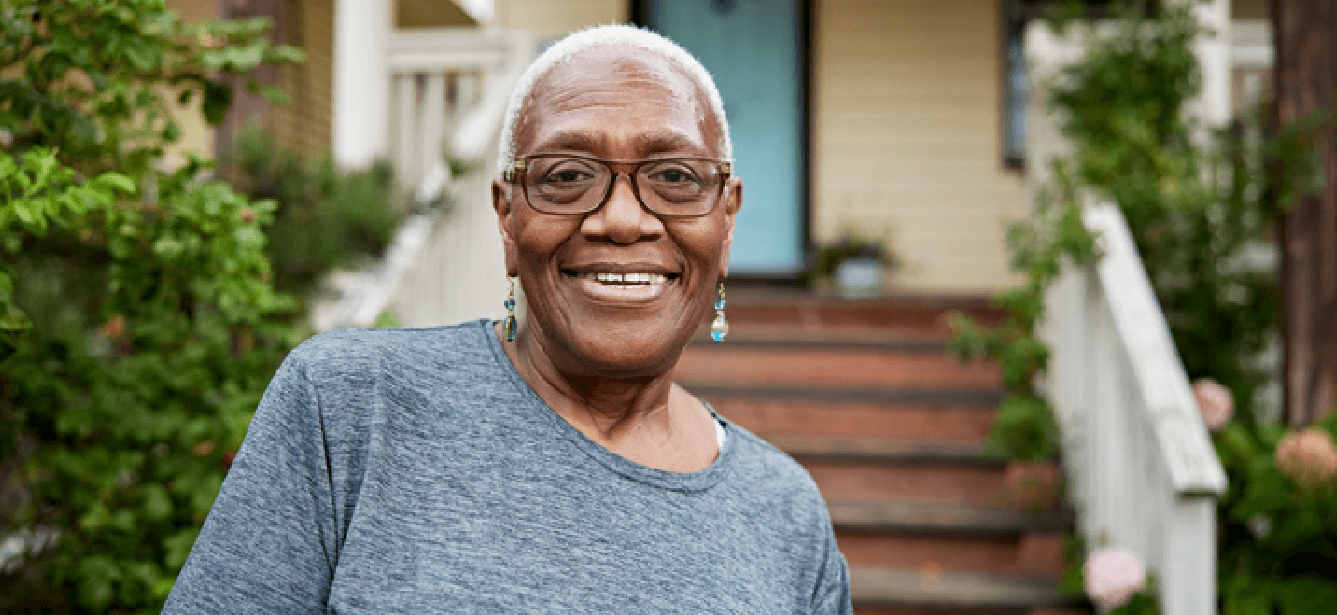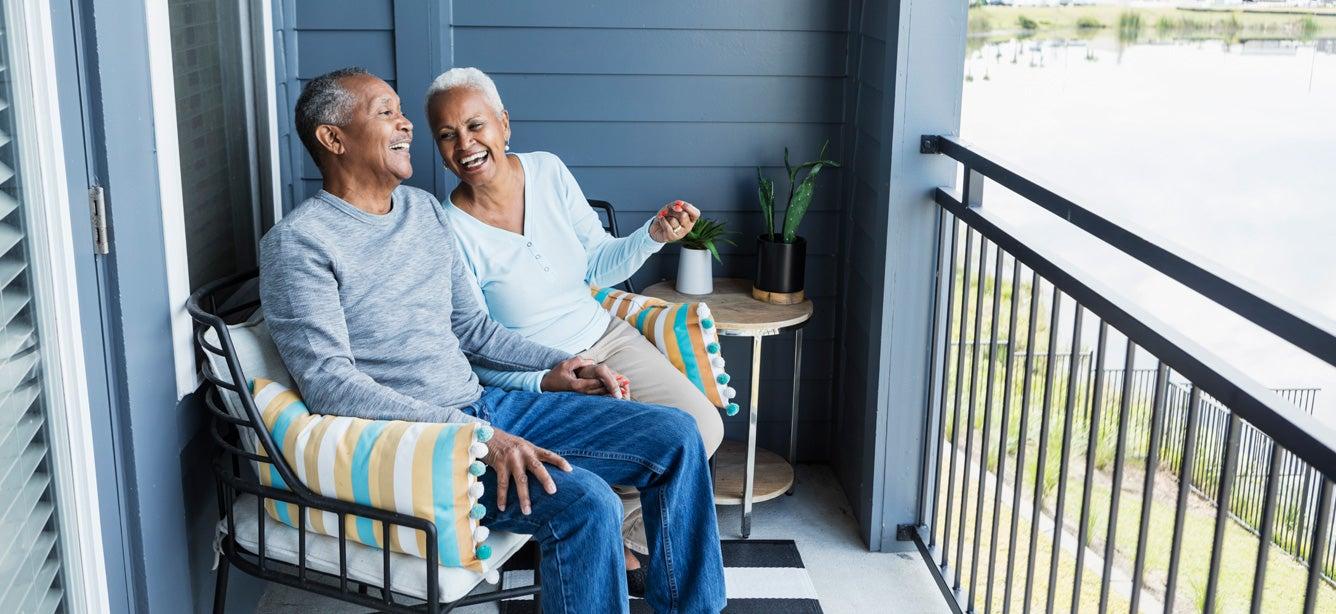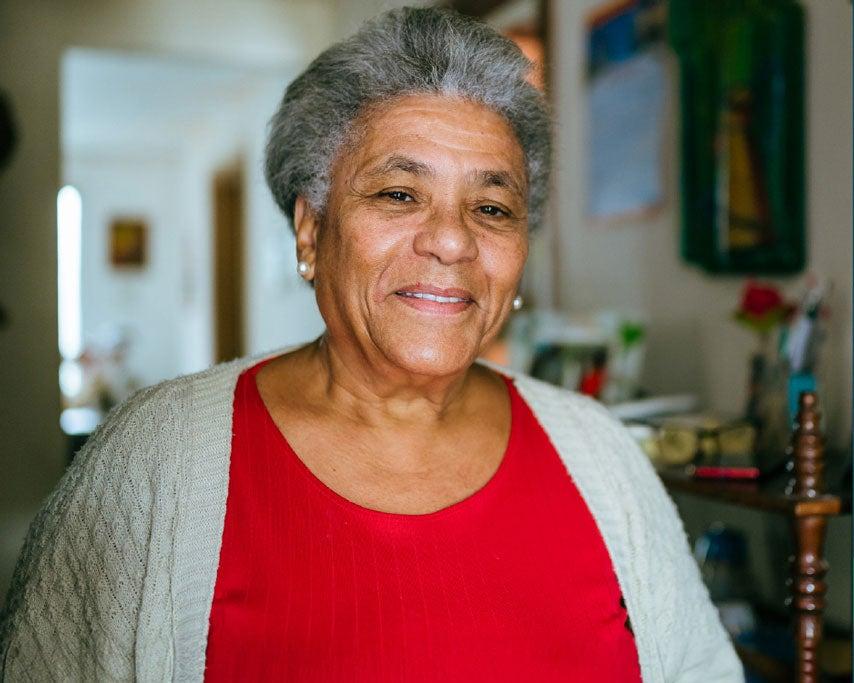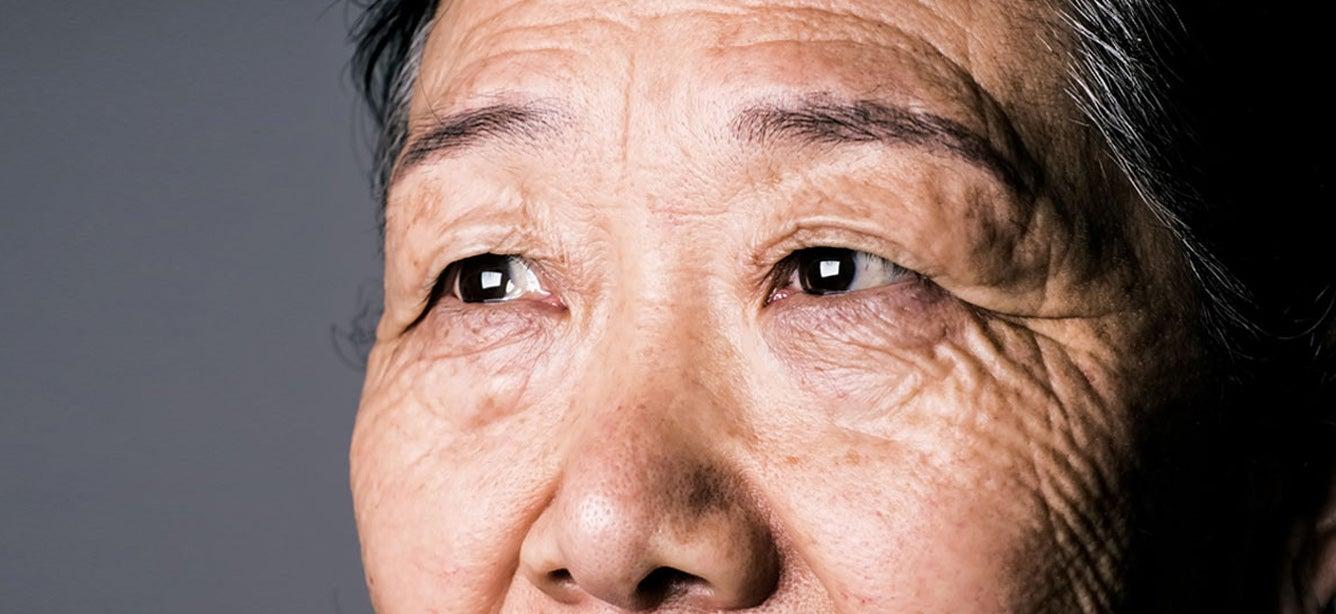
What is elder abuse?
The Centers for Disease Control & Prevention defines elder abuse as “an intentional act or failure to act that causes or creates a risk of harm to an older adult” (age 60 or older).1
Elder abuse includes physical abuse, emotional/psychological abuse, sexual abuse, financial exploitation, neglect, and abandonment. Perpetrators include children, other family members, and spouses—as well as staff at nursing homes, assisted living, and other facilities.
- Physical abuse means inflicting physical pain or injury upon an older adult.
- Sexual abuse means touching, fondling, intercourse, or any other sexual activity with an older adult, when the older adult is unable to understand, unwilling to consent, threatened, or physically forced.
- Emotional/psychological abuse means verbal assaults, threats of abuse, harassment, or intimidation.
- Confinement means restraining or isolating an older adult, other than for medical reasons.
- Passive neglect is a caregiver’s failure to provide an older adult with life’s necessities, including, but not limited to, food, clothing, shelter, or medical care.
- Willful deprivation means denying an older adult medication, medical care, shelter, food, a therapeutic device, or other physical assistance, and exposing that person to the risk of physical, mental, or emotional harm—except when the older, competent adult has expressed a desire to go without such care.
- Financial exploitation means the misuse or withholding of an older adult’s resources by another.
Learn more about the types of abuse from the National Center on Elder Abuse (NCEA).
How many older Americans are abused?
While pre-pandemic sources estimated approximately one in 10 Americans age 60+ have experienced some form of elder abuse,2 a more recent study found that 1 in 5 older adults reported elder abuse during the COVID-19 pandemic.3 Another study estimated that only 1 in 24 cases of abuse are reported to authorities.4
Who are the abusers of older adults?
Abusers are both women and men, and people of all ages. An analysis of calls to the National Center on Elder Abuse resource line found that family members were the perpetrators in nearly 47% of incidents. Medical (non-family) caregivers were perpetrators in almost 13% of cases, while only 6.7% of callers did not know their abuser.5
What makes an older adult vulnerable to abuse?
Social isolation and mental impairment (such as dementia or Alzheimer’s disease ) are two factors. Recent studies show that nearly half of those with dementia experienced abuse or neglect. Interpersonal violence also occurs at disproportionately higher rates among adults with disabilities.
What are the warning signs of elder abuse?
- Physical abuse, neglect, or mistreatment: Bruises, pressure marks, broken bones, abrasions, burns
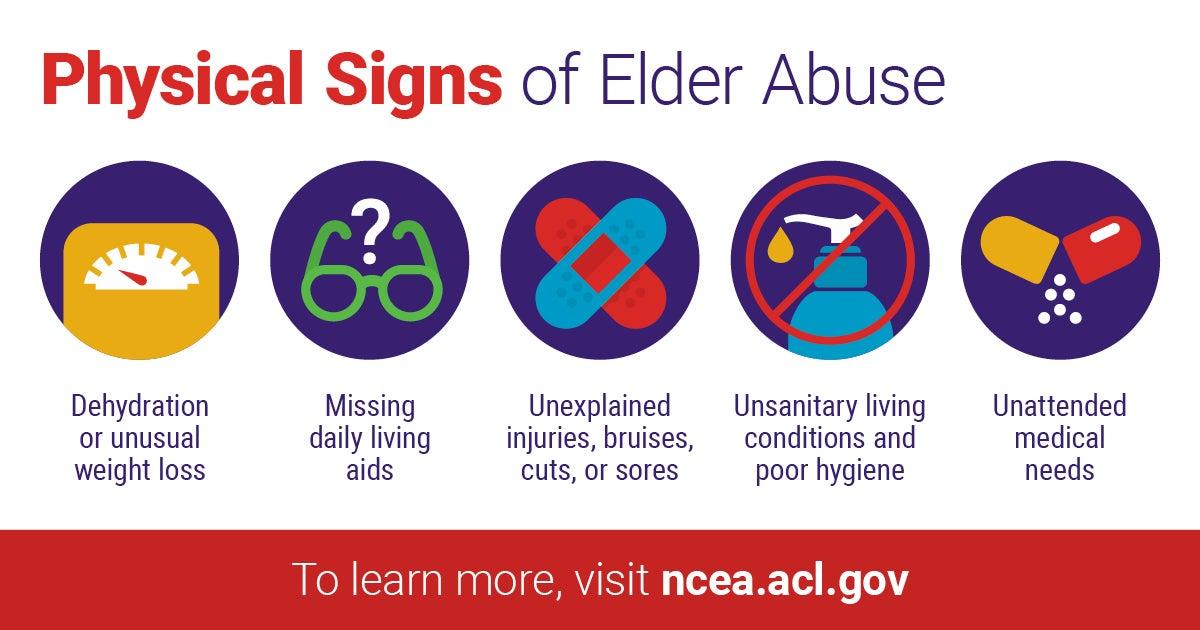
- Emotional abuse: Unexplained withdrawal from normal activities; a sudden change in alertness, or unusual depression; strained or tense relationships; frequent arguments between the caregiver and older adult
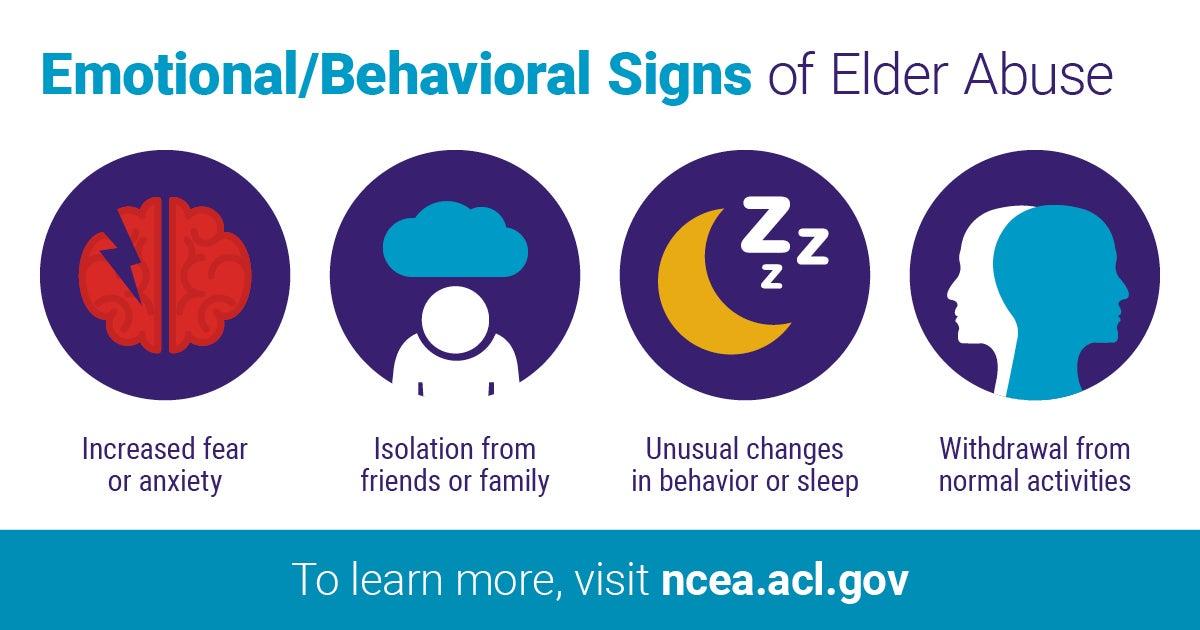
- Financial abuse: Sudden changes in financial situations
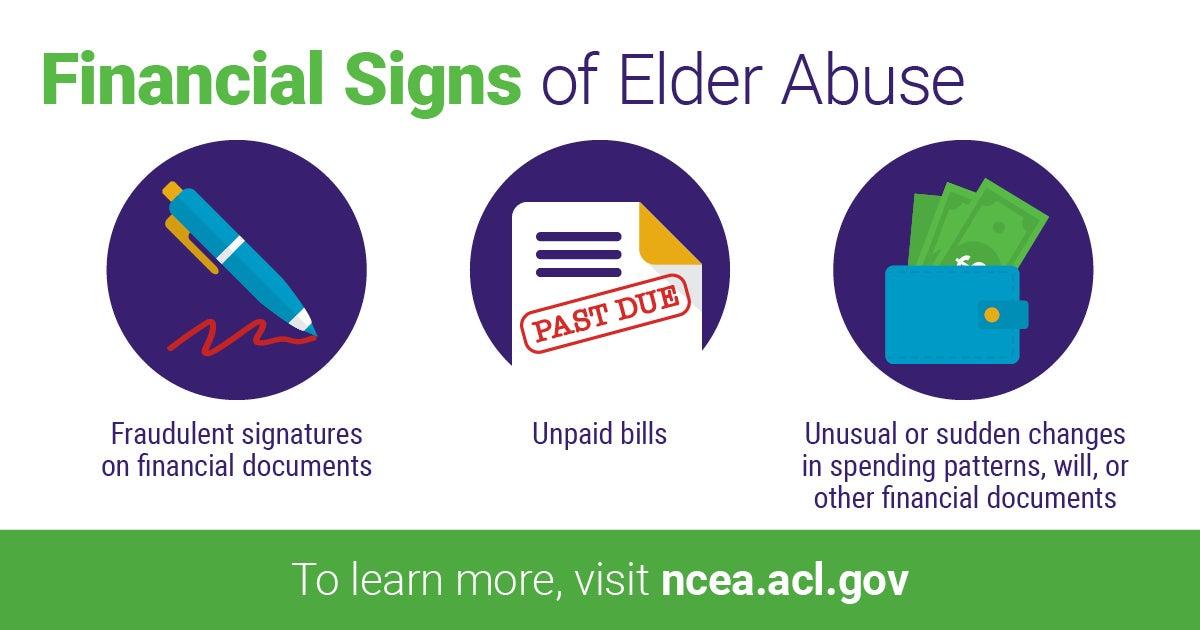
- Neglect: Bedsores, unattended medical needs, poor hygiene, unusual weight loss
- Verbal or emotional abuse: Belittling, threats, or other uses of power and control by individuals
What are the effects of elder abuse?
Abuse and neglect can have serious physical and psychological effects on older adults. Survivors report higher rates of depression and social withdrawal, leading to increased hospitalization and premature death.6
The annual losses incurred by older adults who are victims of financial abuse total over $28 billion each year. Elder financial abuse extends beyond the immediate losses as well; family caregivers and social safety net programs often have to assist with paying for care when an older loved one is exploited.7
Are there criminal penalties for the abusers?
Most states have penalties for those who victimize older adults. Increasingly, across the country, law enforcement officers and prosecutors are trained on elder abuse and ways to use criminal and civil laws to bring abusers to justice. Review state-specific elder justice laws on the Elder Abuse Guide for Law Enforcement (EAGLE) website.
If an older adult is in immediate, life-threatening danger, call 911. Anyone who suspects that an older adult is being mistreated should contact a local Adult Protective Services office, Long-Term Care Ombudsman, or police. NCEA describes various ways to Get Help if you suspect abuse, and more information is available from the Eldercare Locator online or by calling 1-800-677-1116.
How can elder abuse be prevented?
It’s important to remember that elder abuse can happen to anyone, regardless of socioeconomic status, race, health/disability status or living situation. Educating seniors, professionals, caregivers, and the public on abuse is critical to prevention. If you’re an older adult, you can stay safe by:
- Taking care of your health.
- Seeking professional help for drug, alcohol, and depression concerns and urging family members to get help for these problems.
- Attending support groups for spouses and learning about domestic violence services.
- Planning for your own future. With a power of attorney or a living will, you can address health care decisions now to avoid confusion and family problems later. Seek independent advice from someone you trust before signing any documents.
- Staying active in the community and connected with friends and family. This will decrease social isolation, which has been connected to elder abuse.
- Posting and opening your own mail.
- Not giving personal information over the phone.
- Using direct deposit for all checks.
- Having your own phone.
- Reviewing your will periodically.
- Knowing your rights. If you engage the services of a paid or family caregiver, you have the right to voice your preferences and concerns. If you live in a nursing home, call your Long-Term Care Ombudsman. The ombudsman is your advocate and has the power to intervene.
Where can I learn more?
- Administration for Community Living (ACL): Protecting Rights and Preventing Abuse
- National Center on Law & Elder Rights
- USC Center on Elder Mistreatment
- Consumer Financial Protection Bureau Office of Financial Protection for Older Americans
- Department of Justice Elder Justice Initiative
- Federal Trade Commission Scam Alerts
- Elder Justice Coalition
- Women’s Institute for a Secure Retirement (WISER)
- National Adult Protective Services Association
- National Long-Term Care Ombudsman Resource Center
- NCEA and United Nations resources
- World Health Organization
NCOA's role
The National Council on Aging (NCOA) is proud to champion the rights of older Americans—especially women, people of color, the LGBTQ+ community, people with low income, and those living in rural areas. NCOA strives to ensure that every American can age with dignity and respect and be free from abuse or exploitation.
Our work to combat elder abuse takes several forms:
- Each year on June 15 NCOA recognizes World Elder Abuse Awareness Day, a chance to spotlight this global challenge and the steps that individuals and society need to take to eradicate elder abuse.
- NCOA is a strong advocate for continued reauthorization and funding for services under the Elder Justice Act, a critical piece of legislation first passed in 2010 that supports research and innovation to advance elder justice, and helps to enhance Adult Protective Services.
- NCOA also advocates for the reauthorization of the Older Americans Act, which includes support for the Long-Term Care Ombudsman program as elder abuse screening and prevention efforts.
Sources
1. CDC. About the abuse of older persons. April 24, 2024. Found on the internet at: https://www.cdc.gov/elder-abuse/about/index.html
2. Rosay, A. B., & Mulford, C. F. Prevalence estimates and correlates of elder abuse in the United States: The national intimate partner and sexual violence survey. Journal of elder abuse & neglect. January 2017. Found on the internet at https://nij.ojp.gov/library/publications/prevalence-estimates-and-correlates-elder-abuse-united-states-national-0
3. Chang, E. & Levy, B. High Prevalence of Elder Abuse During the COVID-19 Pandemic: Risk and Resilience Factors. American Journal of Geriatric Psychiatry. January 2021. Found on the internet at https://pubmed.ncbi.nlm.nih.gov/33518464/
4. Storey, J. E. Risk factors for elder abuse and neglect: A review of the literature. Aggression and Violent Behavior. January-February 2020. Found on the internet at https://www.sciencedirect.com/science/article/abs/pii/S1359178918303471?via%3Dihub
5. Weissberger, G. H., et al. Elder abuse characteristics based on calls to the National Center on elder abuse resource line. Journal of Applied Gerontology. October 2020. Found on the internet at https://pubmed.ncbi.nlm.nih.gov/31364442/
6. ACL. Elder Abuse: A public health issue that affects us all. June 15, 2018. Found on the internet at: https://acl.gov/news-and-events/acl-blog/elder-abuse-public-health-issue-affects-all-us-0
7. AARP. The Scope of Elder Financial Exploitation: What It Costs Victims. June 27, 2023. Found on the internet at: https://www.aarp.org/pri/topics/work-finances-retirement/fraud-consumer-protection/scope-elder-financial-exploitation.html
